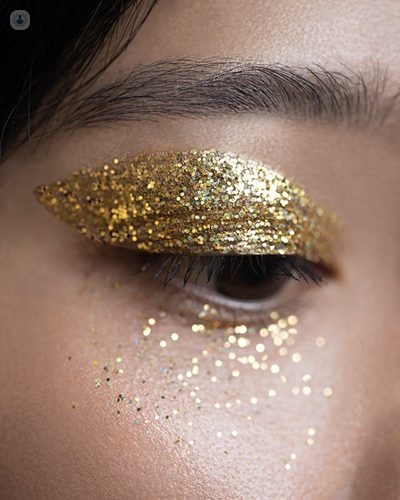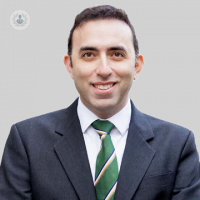Refresh and rejuvenate: Effective treatment for swollen and puffy under eye bags
Written in association with:Although many people may notice changes to the area under and around their eyes as they age, the development of puffy and swollen under eye bags can cause people to be self-conscious and to lose confidence in their appearance. In this detailed guide to malar bags and festoons, renowned consultant ophthalmic and oculoplastic surgeon Mr Daniel Ezra sheds light on how these issues differ from common signs of ageing and how they can be effectively treated. The leading expert also offers expert insight on how filler injection treatments may harm rather than help swollen under eye bags.

What are festoons and malar bags?
Swollen and puffy bags under the eyes, known as malar bags or malar mounds, are a common feature of ageing which can make the face appear older and more tired. Malar bags can develop into festoons (folds of skin, muscle and tissue) and can often cause people to lose confidence in their appearance. In severe cases, they can also obstruct peripheral vision.
What causes malar bags and festoons?
Many factors can be behind this type of under-eye swelling such as exposure to sunlight, smoking, natural ageing and genetics. Malar bags and festoons differ from lower eyelid bags as they result from a structural problem in the skin of the lower eyelid and cheek area related to a slackening of the skin and fat compartments and a loosening of the muscle responsible for closing the eyelids (orbicularis muscle).
Together, these tissues form a concentrated loose area which can become more exaggerated by the retention of fluid (oedema) in the area which gives a more swollen appearance. Patients often find that the bags are worse in the morning and improve across the day.
Why do malar bags and festoons require specialist treatment?
Under eye bags are common in many people and can also be a cosmetic concern but it is important to understand that they are less complex and as such are easier to treat than malar bags. Therefore when seeking treatment for malar bags or festoons, it is important to seek out an experienced oculoplastic surgeon with a specialist understanding of the condition.
Blepharoplasty, a procedure to remove excess skin, muscle and fat from the eye area, can freshen the face and improve a tired appearance and is suitable for many patients but additional treatment is usually required for festoons.
It is vital to discuss this with your doctor before surgery as some procedures, including blepharoplasty, can actually worsen the eye’s appearance if malar bags or festoons are not specifically targeted. This can occur when the patient undergoes merely a standard procedure to correct some of the signs of ageing, which can make malar bags or festoons more pronounced following surgery.
What treatment is available to improve the appearance of festoons and malar bags?
There are several different treatments available for malar bags:
Endolift laser
Endolift laser is an innovative procedure used to treat malar bags with laser energy which is administered into the fat compartment below the skin. This stimulates the body’s natural healing process by activating collagen production which helps to tighten the loose areas in this part of the face where fluid is often retained. This procedure offers good results but, as the treatment is fairly novel, it is unknown how they develop in the longer term.
Dissolving of filler injections
Unfortunately, we see many patients in our clinic whose malar bags have been worsened by previous treatment with filler injections. Typically, fillers cause swelling which can worsen the appearance of festoons and so in nearly all cases, they are not an effective treatment for malar bags as the hyaluronic acid can make the issue more prominent.
When treating malar bags or festoons, we aim to flatten and smooth the area rather than inflate it. We ask patients who have previously undergone filler injections to have them dissolved as this alone will likely significantly improve the area’s appearance, particularly if there is a considerable quantity of filler present.
Combined blepharoplasty with midface lifting
In terms of surgical treatment, the appearance of malar bags may only be improved with a combination of procedures to debulk the lower lid bag, lift the midface area and release the retaining ligaments. A midface lift also helps to reduce excess fluid collection as it stretches the cheek’s loose tissues. If the tissues are very dense, however, surgery will not likely be able to resolve this issue.
Following surgery, patients may experience some swelling which will resolve over time. It’s important for patients to be clear about any potential complications and all the aspects involved in this type of treatment.
Direct excision
For patients with very severe festoons with pronounced overhanging skin and muscle, excision treatment may be suitable. In this procedure, the tissues can be directly removed, meaning there will no longer be dead space where fluid may be retained. Following excision, the skin is stitched together with care to avoid significant scarring. This type of treatment is most suitable for patients with pronounced festoons and natural wrinkles or lines in this area.
If you are seeking treatment for malar bags or festoons and wish to discuss your options with Mr Ezra, don’t hesitate to visit his Top Doctors profile where you can book a consultation.


